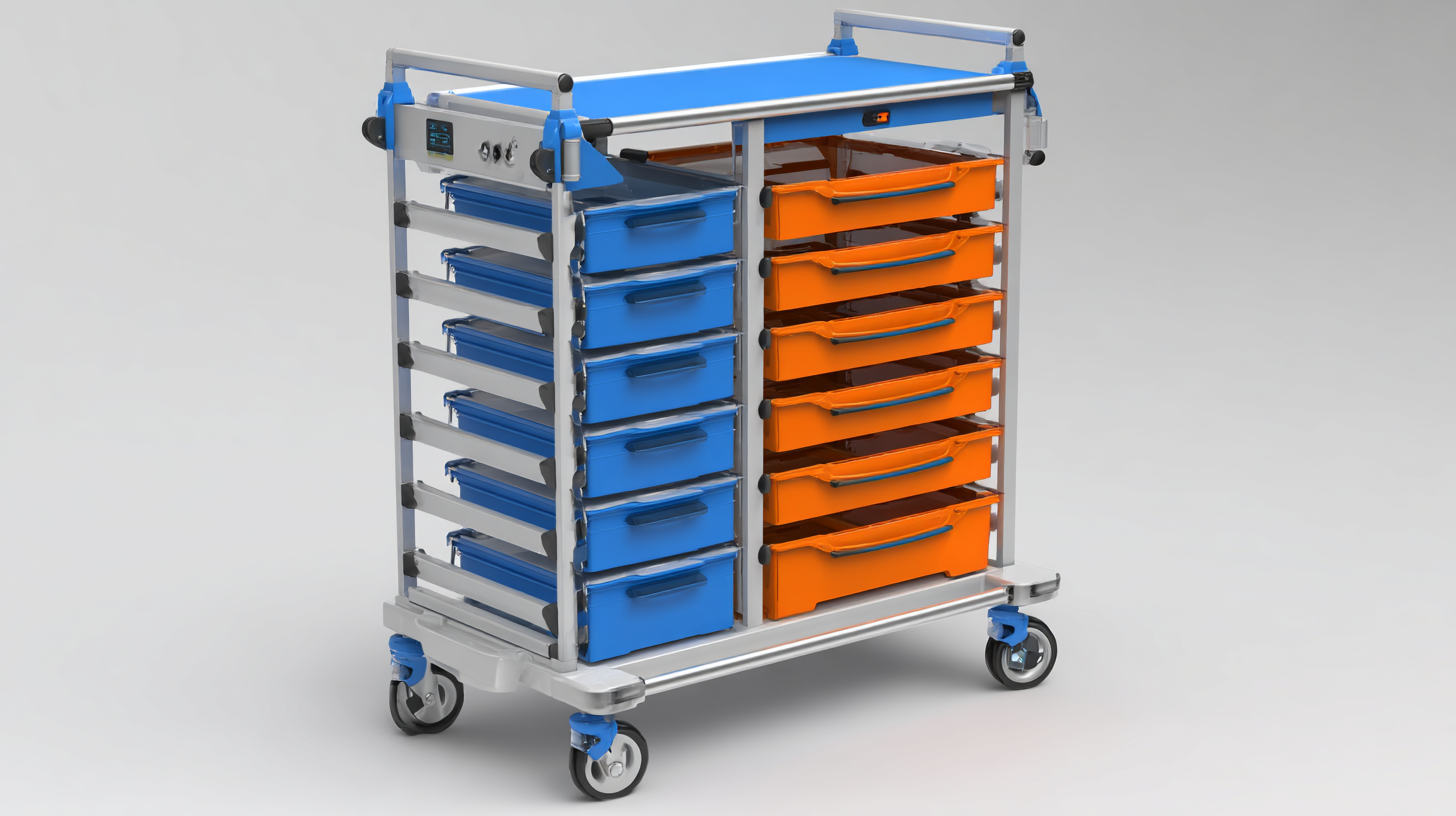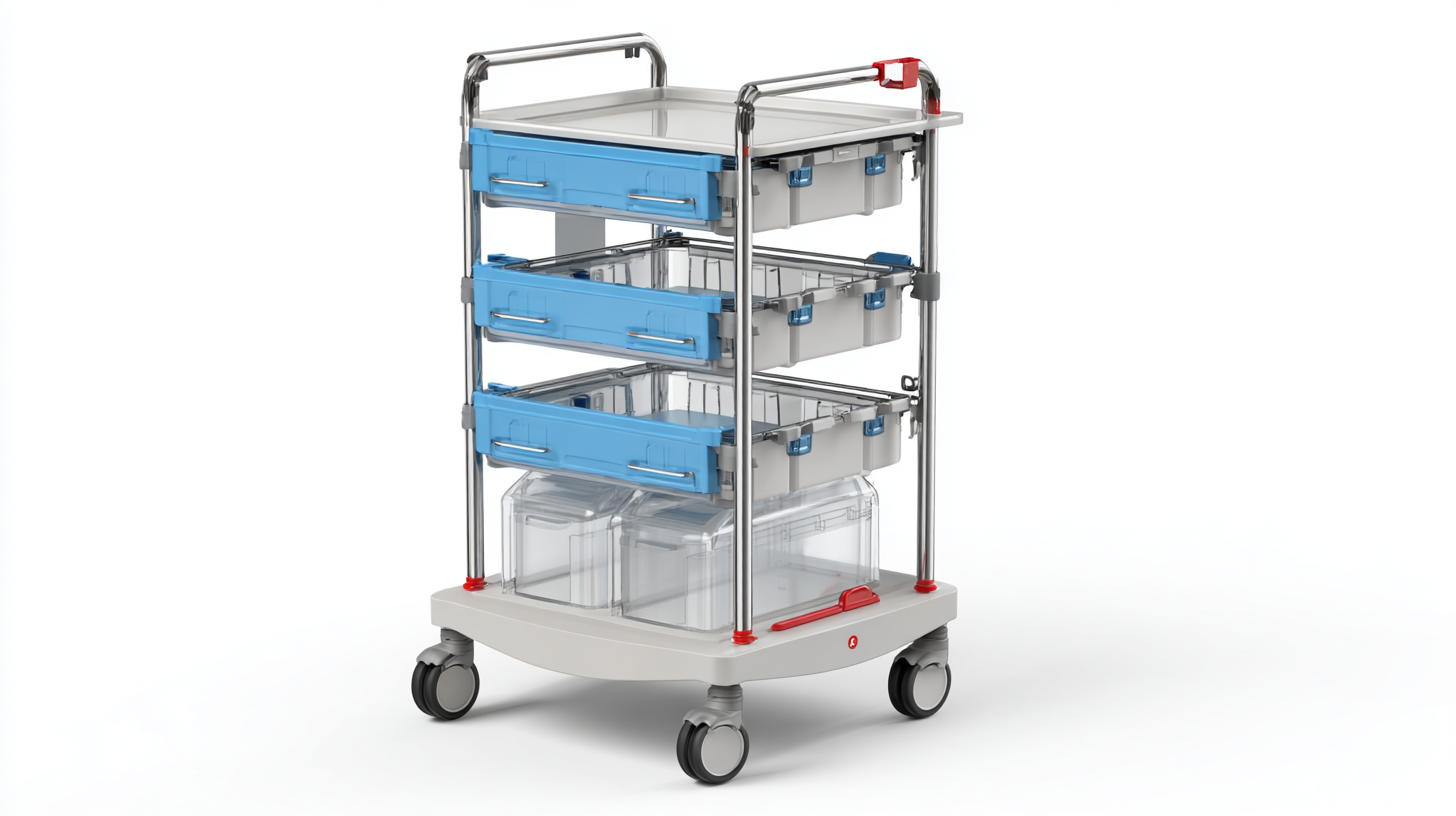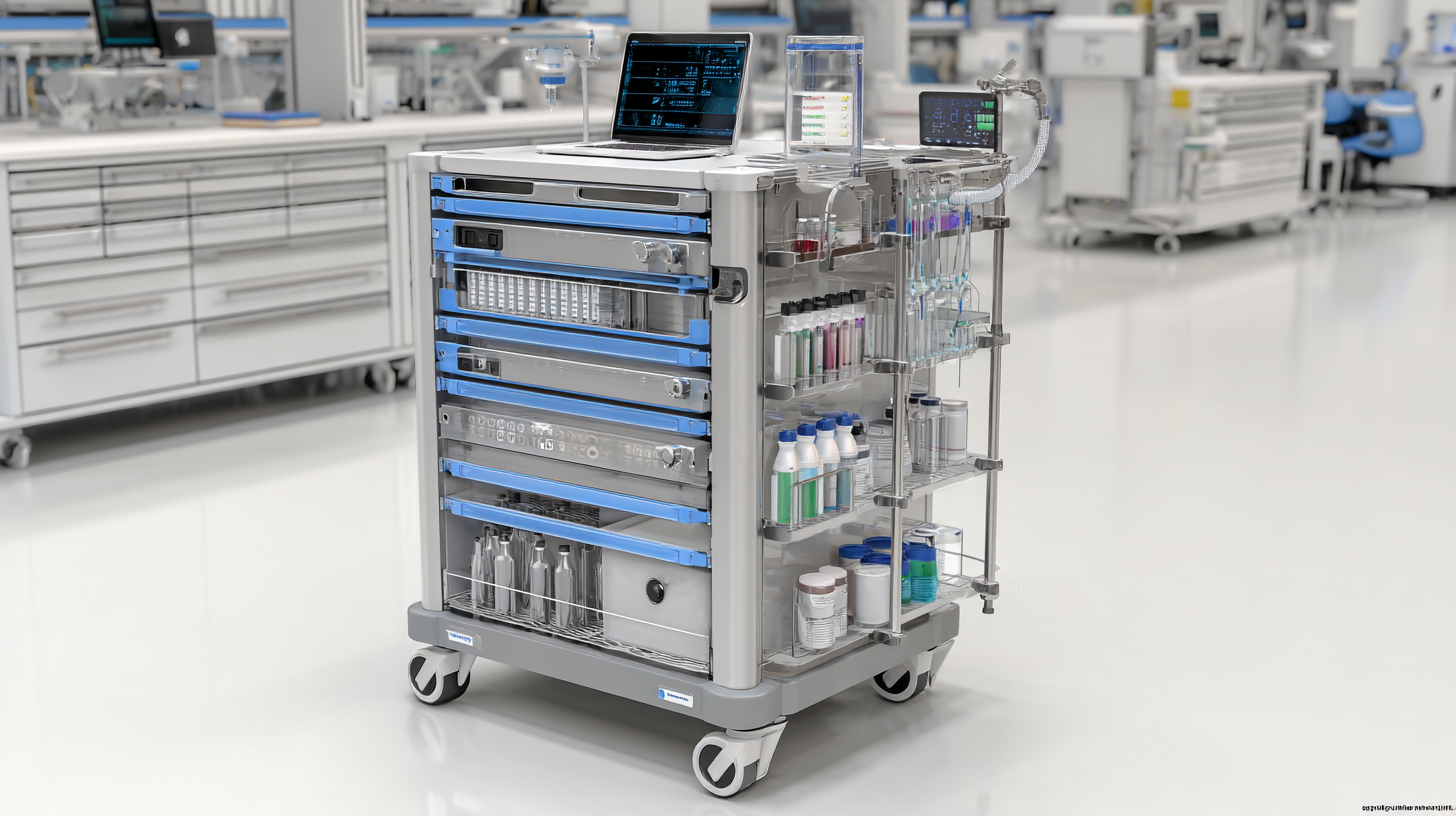How to Choose the Best Medicine Cart for Your Healthcare Facility Needs
In the ever-evolving landscape of healthcare, the role of the medicine cart has become increasingly pivotal in enhancing operational efficiency and patient care. With the global healthcare logistics market expected to reach $180 billion by 2025, the demand for sophisticated medical equipment, including medicine carts, is on the rise. These carts not only streamline the medication administration process but also significantly reduce the risk of errors, which is critical as studies show medication errors affect over 7 million patients annually in the U.S. alone. As healthcare facilities look towards 2025 and beyond, understanding how to select the best medicine cart tailored to specific needs will be crucial in leveraging the latest technological advancements and ensuring optimal patient outcomes.

Understanding the components and functionality of medicine carts enhances caregivers' productivity and patients' safety. Ensure you choose a cart that accommodates essential medical supplies efficiently.
Factors to Consider When Selecting a Medicine Cart for Healthcare Facilities
When selecting a medicine cart for healthcare facilities, several key factors should guide your decision. Firstly, consider the size and layout of your space. The cart needs to be compact enough to navigate tight hallways and patient rooms while still providing ample storage for medications and supplies. A well-designed cart will ensure that items are easily accessible to staff, streamlining workflow and enhancing patient care.
Secondly, prioritize the cart's material and construction. Look for carts made from durable, easy-to-clean materials that can withstand the rigors of a healthcare environment. Stainless steel or high-quality medical-grade plastic is often ideal. Additionally, consider features like locking systems and secure storage compartments to safeguard medications and prevent unauthorized access. Lastly, evaluate mobility features, such as smooth-rolling wheels and ergonomic handles, which can significantly improve usability and efficiency for healthcare professionals during their demanding shifts.

The Impact of Quality Manufacturing on Medicine Cart Durability and Performance
When selecting a medicine cart for a healthcare facility, the quality of manufacturing plays a crucial role in determining both durability and performance. According to a recent report from the Healthcare Supply Chain Association, high-quality medicine carts can significantly reduce maintenance costs by up to 30% over their lifespan. This is largely due to the use of superior materials and advanced manufacturing techniques that ensure these carts withstand the rigorous demands of a healthcare environment. Carts constructed from stainless steel or high-density polyethylene, for instance, are not only resistant to corrosion and impact but are also easier to clean, mitigating the risk of hospital-acquired infections.
Additionally, the performance of a medicine cart can directly impact patient care. A study published in the Journal of Healthcare Engineering found that carts designed with ergonomic features and effective compartmentalization improved medication delivery efficiency by up to 25%. Healthcare staff reported that carts with well-thought-out designs reduced time spent searching for medications and supplies, leading to quicker response times and improved patient outcomes. Therefore, investing in high-quality, well-manufactured medicine carts is essential for ensuring both durability and operational excellence in healthcare facilities.
How to Choose the Best Medicine Cart for Your Healthcare Facility Needs - The Impact of Quality Manufacturing on Medicine Cart Durability and Performance
| Feature | Description | Importance | Durability Rating |
|---|---|---|---|
| Material | High-grade, non-corrosive materials | Prevents wear and tear, ensuring longevity | Excellent |
| Wheels | Swivel casters for ease of movement | Enhances maneuverability in tight spaces | Very Good |
| Design | Ergonomic and modular design | Improves user comfort and storage flexibility | Good |
| Capacity | Ample storage for medications and supplies | Affects time efficiency in medication administration | Good |
| Locking Mechanism | Secure locking system for safety | Prevents unauthorized access to medications | Excellent |
Key Features That Enhance Efficiency in Medicine Carts for Medical Staff
When selecting a medicine cart for your healthcare facility, certain key features can significantly enhance the efficiency of medical staff. According to a report from the Journal of Healthcare Engineering, nearly 30% of nurses’ time is spent on medication management, which highlights the critical need for streamlined processes. A well-designed medicine cart should facilitate easy access to medications while ensuring safety and compliance with regulatory requirements. Features such as secure locking mechanisms for narcotics, clear labeling systems, and organized storage compartments can drastically reduce the time healthcare professionals spend searching for essential items.
Tip: Consider carts with integrated technology, such as electronic medication administration records (eMAR) systems, which can improve accuracy and help minimize medication errors.
Additionally, mobility is crucial; carts equipped with smooth-rolling wheels and ergonomic handles allow staff to transport medications swiftly between different departments, ultimately enhancing patient care.
Furthermore, the durability and adaptability of medicine carts cannot be overlooked. Materials that are easy to clean and resistant to damage from frequent use ensure longevity, which is essential in a bustling healthcare environment.
Tip: Opt for customizable carts that can be tailored to specific departmental needs, including adjustable shelving and specialized compartments for different types of medications or supplies.
This adaptability can make a significant impact on workflow efficiency across various healthcare settings.

Comparative Analysis of Domestic vs. International Medicine Cart Options
When it comes to equipping healthcare facilities, selecting the right medicine cart is crucial. A comparative analysis of domestic and international options reveals significant differences in design, functionality, and compliance with healthcare regulations. According to a report by IBISWorld, the healthcare furniture manufacturing industry in the U.S. is projected to reach $15 billion by 2024, reflecting a growing demand for high-quality, efficient storage solutions like medicine carts. Domestic manufacturers often focus on ergonomics and user-friendly designs that comply with American healthcare standards, ensuring enhanced safety and efficiency.
Conversely, international medicine cart options may provide unique features at competitive prices. For instance, a study published by Global Market Insights noted that the global market for medical carts is expected to expand at a CAGR of over 10% from 2021 to 2027, largely driven by advancements in technology and materials. International brands frequently leverage innovative designs, integrating features such as modular configurations and advanced security systems. However, it is essential for facilities to carefully assess compliance with local regulations, as variations in manufacturing standards can impact the quality and reliability of these carts.
Importance of Customization in Meeting Specific Healthcare Facility Requirements
Choosing the right medicine cart for your healthcare facility is essential in optimizing workflow and ensuring patient safety. One of the key aspects often overlooked is the importance of customization in meeting specific healthcare requirements. Every facility has unique needs based on its size, type of care provided, and patient population, which makes a one-size-fits-all solution inadequate. Customization allows you to tailor the cart’s features—such as storage compartments, locking mechanisms, and mobility options—to fit your staff’s workflow and reduce the risk of medication errors.
Tip 1: Assess your facility's requirements by talking to your healthcare workforce. Gather insights on their daily tasks and challenges to identify which features can enhance efficiency and accessibility. This approach can help you choose a cart that not only meets regulatory standards but is also intuitive for your team to use.
Tip 2: Consider modular designs that can be adapted over time. As your healthcare facility grows or changes its offerings, a customizable cart allows for alterations in configuration without the need for complete replacement, ensuring long-term utility and cost-effectiveness. This flexibility is crucial in creating a supportive environment for both healthcare providers and patients.
